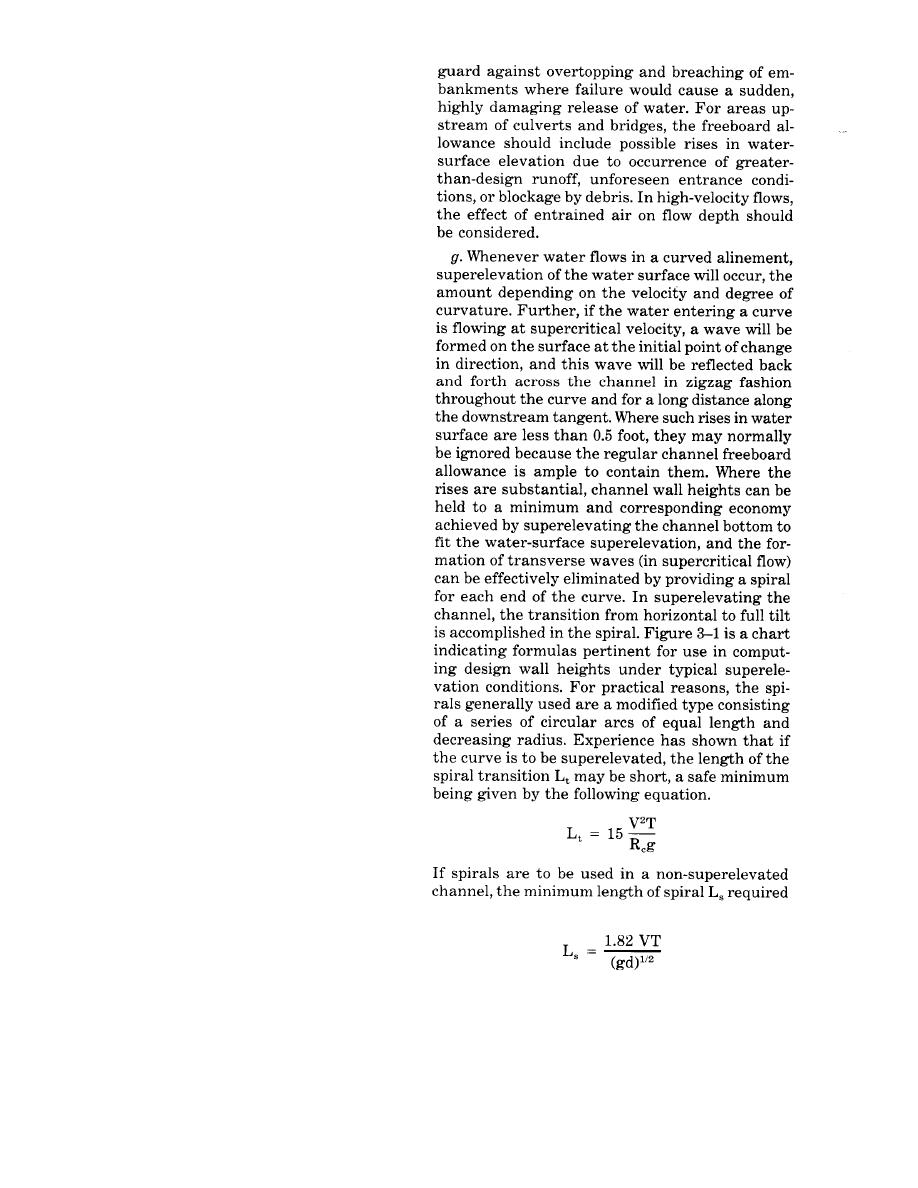
TM 5820-4/AFM 885, Chap 4
flow can be controlled by providing drop struc-
tures or other energy dissipators, and to a limited
extent by widening the channel thus decreasing
flow depths or by increasing roughness and depth.
If nonerosive flows cannot be attained, the chan-
nel can be lined with turf, asphaltic or portland-
cement concrete, and ungrouted or grouted rub-
ble; for small ditches, half sections of pipe can be
used, although care must be taken to prevent en-
trance and side erosion and undermining and ul-
timate displacement of individual sections. The
choice of material depends on the velocity, depth
and turbulence involved; on the quantities, avail-
ability, and cost of materials; and on evaluation
of their maintenance. In choosing the material,
its effect on flow characteristics may be an im-
portant factor. Further, if an impervious lining is
to be used, the need for subdrainage and end pro-
tection must be considered. Where a series of drop
structures is proposed, care must be taken to avoid
placing them too far apart, and to insure that they
will not be undermined by scour at the foot of the
overpour. The design of energy dissipators and
means for scour protection are discussed subse-
quently.
e. Side slopes for unlined earth channels nor-
mally will be no steeper than 1 on 3 in order to
minimize maintenance and permit machine mow-
ing of grass and weeds. Side-slope steepness for
paved channels will depend on the type of mate-
rial used, method of placement, available space,
accessibility requirements of maintenance equip-
ment, and economy. Where portland-cement con-
crete is used for lining, space and overall economic
considerations may dictate use of a rectangular
channel even though wall forms are required.
Rectangular channels are particularly desirable
for conveyance of supercritical channel flow. Most
channels, however, will convey subcritical flow and
be of trapezoidal cross section. For relatively large
earth channels involving levees, side slopes will
depend primarily on stability of materials used.
f. An allowance for freeboard above the com-
puted water surface for a channel is provided so
that during a design storm the channel will not
overflow for such reasons as minor variations in
is:
the hydrology or future development, minor su-
perelevation of flow at curves, formation of waves,
unexpected hydraulic performance, embankment
settlement, and the like. The allowance normally
The terms in both equations are defined in ap-
ranges from 0.5 to 3 feet, depending on the type
pendix D. The rise in water surface at the outside
of construction, size of channel, consequences of
bank of a curved channel with a trapezoidal sec-
overflow, and degree of safety desired. Require-
tion can be estimated by the use of the preceding
ments are greater for leveed channels than those
formulas.
wholly within the ground because of the need to
3-2



 Previous Page
Previous Page
